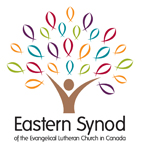Psychologists tell us that in order to be healthy people we need to be able to mourn. It is healthy to give voice to our grief. It is healthy to acknowledge the frailty of our human condition. This is not news for Christians. In the beatitudes Jesus tells us that those who mourn are blessed. We know that it is good for us to collectively acknowledge not just the happy things of life, but also the sad; to acknowledge, as one, that things are not as we would wish them to be and not as God intends them to be.
Each fall I am thankful that we have a national day of thanksgiving wherein the general public is given the opportunity to officially acknowledge our need to offer thanks to God. I often think that we could use more such secular holidays! Perhaps it would be wise to institute another national holy-day, in this case, an official day for repentance and mourning.
In the state of Israel, they publicly observe the Jewish holy day Yom Kippur. Those who have experienced an Israeli Yom Kippur tell me that a mystical silence settles over the whole nation. Everything stops. Everything is disrupted as the nation engages in a collective act of repentance and mourning that acknowledges all the injustice, hurt and violence that we share as a people, both corporately and individually.
The church’s liturgical calendar provides us with similar points of reference. Our lives, too, are ordered by the cycles of Advent, Christmas and Epiphany, Lent and Holy Week, Easter through Pentecost, and then by the long weeks of Ordinary Time. It’s a wonderful gift that provides us with a special lens through which we experience the rhythms and movements of what constitutes the stuff of our everyday lives, even in the midst of pandemic days where every day seems like yet another “blursday.”
In her book Things Seen and Unseen, Nora Gallagher speaks of “living by a calendar that runs parallel to my Day-Timer: a counterweight, one time set against another. The church calendar calls into consciousness the existence of a world uninhabited by efficiency, a world filled with the excessiveness of saints, ashes, smoke, and fire; it fills my heart with both dread and hope. It tells of journeys and mysteries, things ‘seen and unseen,’ the world of the almost known.”
Ash Wednesday is a day of “grieving for a purpose” – a day of ritualized mourning that has a discernable and clear end in sight. We grieve for the sake of healing. We mourn for the sake of cleansing. We plead in the words of the great penitential Psalm 51 that we might be “washed and made clean.”
As a young pastor in rural Ontario, I was surprised when a parishioner taught me – thank you Ruthie Mae – that ashes are used in the making of soap. I had no idea but was delighted to learn that the church’s preferred symbol of lament and mourning could at the same time be seen as a symbol of cleansing! But it made sense!
For in Ash Wednesday’s sign of the cross, we also recall the gift of baptism and how through its waters we have died to sin and risen to new life in Christ. We recall both actions; dying and rising and by wearing ashes, ritually step towards new life!
Ash Wednesday is a heavy day. It is a dark day – definitely not a party day! But such days can also hold special gifts. Pray and watch for one never knows what miracles of life might rise from these ashes!
